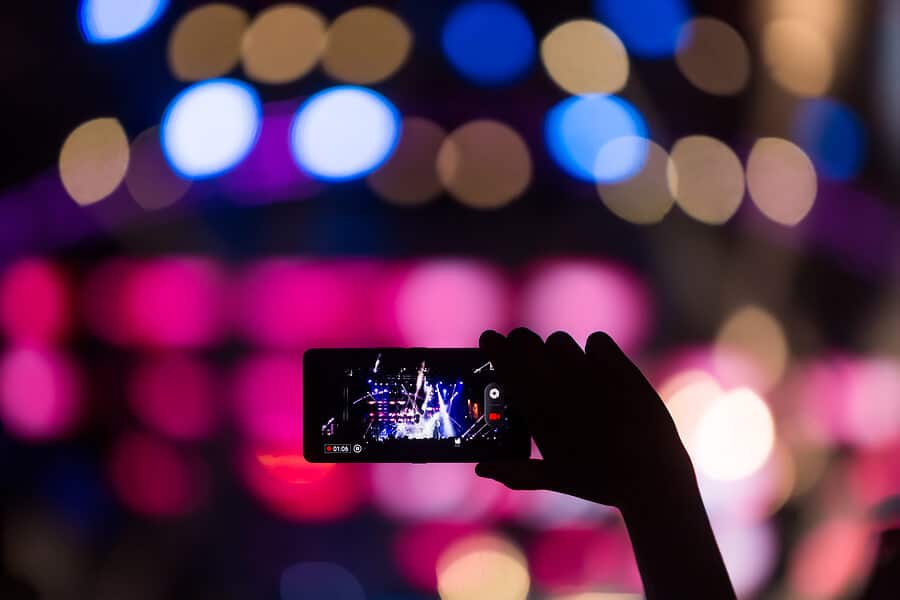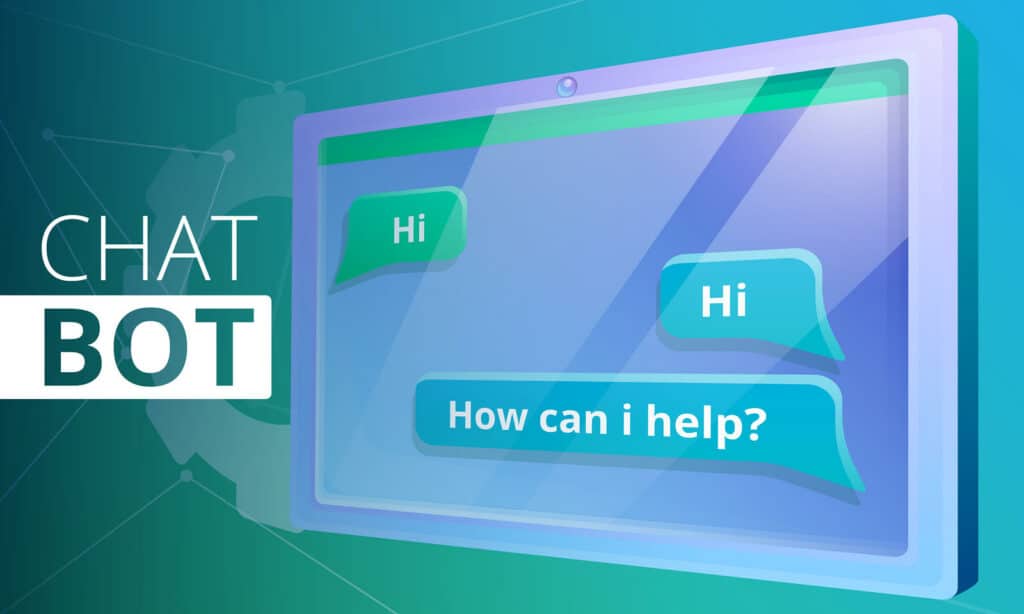People can’t get enough of live video these days, making it an event technology you can’t afford to ignore. Forty-three percent of the most-watched live content is of conferences and concerts. For all these reasons and more, livestreaming event content offers up invaluable advantages.
Why bother livestreaming your event?
- Reach bigger audiences, especially those who didn’t make it to your corporate event this time around – U.S. residents spend about 5 hours each week watching video content (only on mobile phones!), and a total of 232 million Americans watched online video in 2020.
- Gain exposure for your event – Ninety-two percent of those who consume video on mobile share it with someone else. And people are 32% more likely to share video content than any other kind of content.
- Use video footage for promotional materials – Of those who watch the livestream of an event, 67% are more likely to buy a ticket to a similar event.
- Snag new customers – Ninety-three percent of businesses gain new customers by posting video content on social media.
- Appeal to the people you want to reach – Eighty-two percent of consumers prefer live video from a brand over social posts from that brand, and 54% of consumers want to see more video content from brands and businesses they support.
All of this equals more revenue.
How can you harness the power of livestreaming? Here are a few strategies and tools to help you make the most of your livestream and increase your event exposure.
Choose the Right Livestreaming Platform
With so many livestreaming platforms and tools on the market, which do you choose? Your options can break down into two categories:
1. Social Network Streaming
Social media platforms such as Facebook, YouTube, and Instagram make it easy for brands to livestream.
The benefits?
- They’re quick to learn.
- They can be made casual or more professional.
- The potential audience is huge – For instance, over 500 million people watch Facebook Live videos every day.
- They don’t require additional recording equipment—just a mobile device.
If you’re only streaming short video clips of your event, social media platforms are an affordable way to start. With this approach, livestreaming is a low-stakes way to add video to your event marketing toolbox, since there’s no need for special equipment or high production values.
Livestreaming Via LinkedIn
LinkedIn joined the livestream party in 2019, with the launch of a feature called LinkedIn Live. With this feature, you can launch a live event stream on LinkedIn via a third-party service provider, which gives you all the advantages of that option.
One major benefit of streaming via LinkedIn is your audience. Other social media platforms like Facebook and Instagram have larger numbers of users, but the user base is extremely general. LinkedIn’s user base is smaller but more focused. Because LinkedIn Live partners with third-party livestreaming providers, you can access those huge social media audiences and reach your professional community, all in the same broadcast.
Using LinkedIn Live as your streaming platform of choice can significantly boost your engagement levels too. According to LinkedIn, their Live videos get up to 7 times more reactions and 24 times more comments than native video content streamed directly onto a social media platform like Facebook.
Another benefit of LinkedIn Live is that while you can livestream via a third-party provider, you’re not locked into that option. If you have the necessary expertise, you can go live using your own custom stream. This gives you some extra flexibility in how you want to produce and broadcast your content.

2. Livestreaming Service Provider
Unlike social network streaming, live streaming service providers such as Vimeo Livestream and Dacast give you total control over your content. You can also call your livestreaming service provider if something goes wrong mid-stream.
One of the biggest advantages of using a livestreaming service provider is that you’re not limited to streaming on just one website or social media platform. You can livestream to dozens of locations simultaneously, giving your video content a much wider potential audience.
Another benefit is the ability to livestream with higher production values. By adding lower-thirds, logos, transitions, and other graphics, you can give your content more polish. The option to integrate interactive features such as polls and Q&As helps boost engagement too.
A livestreaming service provider is a good option if:
- You want your event’s livestream to be a little more professional-looking
- You expect your livestream to be lengthy.
- You’re unsure your marketing team can build a livestreaming strategy.
The right streaming option for your organization depends on your budget and goals. Social media networks offer livestreaming capabilities for free. But in terms of reliability, quality, and bonus features, livestream service providers can’t be beat.

Build a Livestream Strategy
Check out these tried-and-true tips for forming a livestreaming strategy that will keep viewers glued to their screens (and more likely to register for next year’s event):
Promote Your Livestream Early
Like your corporate event, your event livestream must be promoted early and often to get people to tune in. Start spreading the word about your livestream at least a week in advance of the event, using your email and social media channels.
Pro Tip: Give your audience a compelling reason to tune in. For example, create a teaser video of your event and hint at exclusive, behind-the-scenes interviews with special guests.
Give Your Livestream Structure—but Make It Flexible
Stay organized during the event by creating an outline for your livestream. This will keep the person in charge of the stream from getting too distracted and also ensure they know what’s important to capture.
That being said, people love the authenticity of live video! It could be why they tend to spend eight times longer watching it than on-demand video. Take advantage of unexpected opportunities that arise, like the appearance of a high-profile guest or a particularly lively Q&A session.
Take Viewers Behind the Scenes
Pique your audience’s curiosity with a virtual VIP pass that takes them backstage for a behind-the-scenes look. This kind of video content is highly engaging because it has an off-the-cuff, anything-could-happen feeling and gives the audience the sense that they’re seeing the real face of the brand. Your audience will enjoy experiencing a unique part of your event that few others—even ticketholders—get the chance to see.
Leverage Interactive Technology
Interacting with your live video audience is key to a successful livestream. Here are a few ways to make your stream a two-way conversation:
- Create an event hashtag, and read tweets aloud on live video.
- Hold a Q&A, responding directly to questions submitted by viewers.
- Use live audience polling to keep viewers engaged and get their feedback.
- Offer free resources to download during the event; for example, a free guide or template.
Choose an Engaging Host
A fun host enhances viewers’ experience and helps you make a great (first) impression. Choose your host wisely, and practice going live in advance to ensure they’re a natural livestreamer.
Pro Tip: When it’s time to go live, the host shouldn’t forget to introduce themselves to the audience!
Capture the Highlights of the Event
Many event managers fear that showing the highlights of their events on livestream videos discourages people from attending them in person. On the contrary, it can create FOMO (fear of missing out) in the people who are watching from a distance.
Coachella has leveraged the power of livestreaming since 2011 to create FOMO. Considering how tickets for their 2018 festival sold out within 3 hours, it looks like their livestreaming strategy has found success. In 2019 Coachella achieved a record number of livestreaming views, with nearly 82.9 million views—a whopping 90% increase over livestream numbers for 2018.
Once your livestream is over, make smart use of your video content by embedding it on your website. By allowing people to view the footage at any time, you can build excitement for your next event. Adding video content to your website can:
- Increase website traffic.
- Increase the amount of time visitors spend on the site.
- Increase lead generation and sales.

Invest in Livestreaming Equipment
Anyone can livestream from a mobile device. To ‘wow’ your viewers and give them a good impression of your brand, you need the right recording equipment for the job:
Professional HD camera – For beginner video production, a single-camera setup works. As you become more skilled with livestreaming, consider upgrading to a multi-camera setup to make your stream fool proof.
Microphones – Nothing loses viewers quicker than seeing a mouth move with no (or delayed) sound. In fact, videos with low-quality audio are perceived more negatively than poor-quality visuals. A high-quality microphone makes you sound professional and gives listeners a better audio experience. If you’re going to use your livestreams for interviews, invest in a professional microphone that reduces background noise.
Tripod – A tripod keeps your camera stable during live events. The last thing you want is to annoy viewers with irritating shakes.
Encoder – Video encoders convert your video file from one format to another to achieve the best possible playback on any device (mobile, desktop, tablet). Livestream encoders come in two main types:
- Software – Many livestreaming services come with software encoders built into their platforms. This integration makes it easy for beginners to customize their streams and get running at a relatively low cost.
- Hardware – Hardware encoders are usually reserved for professional broadcasters and come at a steeper price point. For this reason, most livestream productions stick to software encoders.
High-speed internet connection – Everyone knows how frustrating it is to wait for a video to buffer. Don’t let this happen to your viewers! With a fast and reliable internet connection, you can keep your stream running as smoothly as the event itself.
Take Streaming to the Next Level by Hosting a Hybrid Event
Streaming events is a great way to publicize them, but if you have the capability to broadcast live content, why stop there? Hosting a hybrid event, instead of a purely physical event, could help you do so much more.
A hybrid event is one that happens both in the physical world and online, incorporating elements of both live and virtual events. For instance, at a hybrid conference, the event’s keynote speaker, education sessions, and panel discussions may be held in a live venue space and also be broadcast live online. At a hybrid trade show, exhibitors might have both a physical exhibit at the live venue and a virtual booth on the event website.
Live events and virtual events each have their own particular benefits. For instance, live events offer the best networking opportunities, but attending an event online is cheaper, which means the potential audience is larger. By holding a hybrid event, you can retain all the advantages of both live and virtual events while attracting more attendees and with the potential for a global audience.
Is a Hybrid Event Right for You?
Live Event Streaming Can Be a Huge Boost for Your Event Toolkit
Livestreaming a corporate event requires some education and preparation, but the payoff can be huge. With the right tools and strategies, you can maximize exposure for your event and build a massive audience online and at your next event.
Looking for help incorporating a livestreaming strategy into your overall event strategy? Let our expert event planners take care of some—or all—of your event tasks. We’ll keep your corporate event or conference running smoothly and looking great in person and on a screen.









